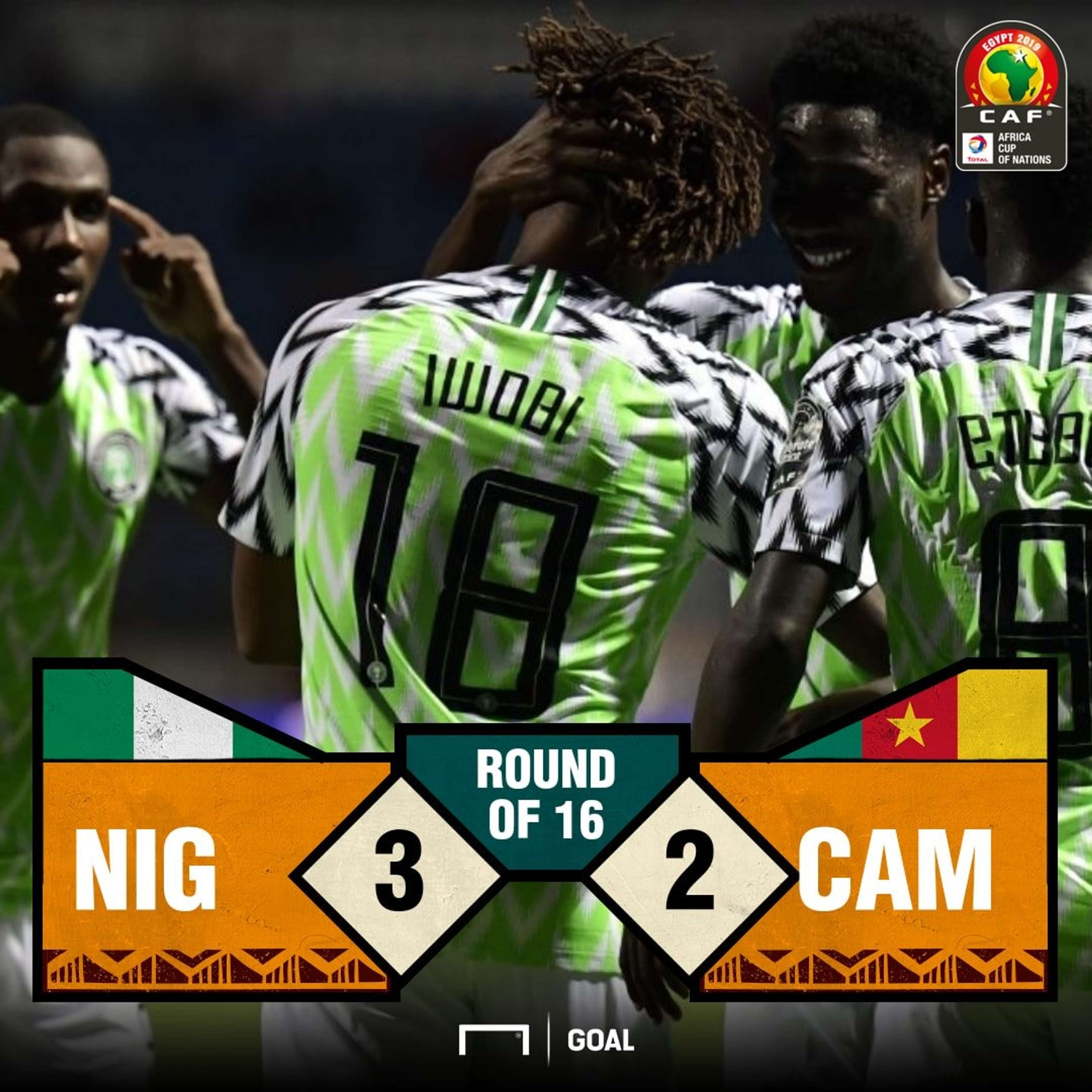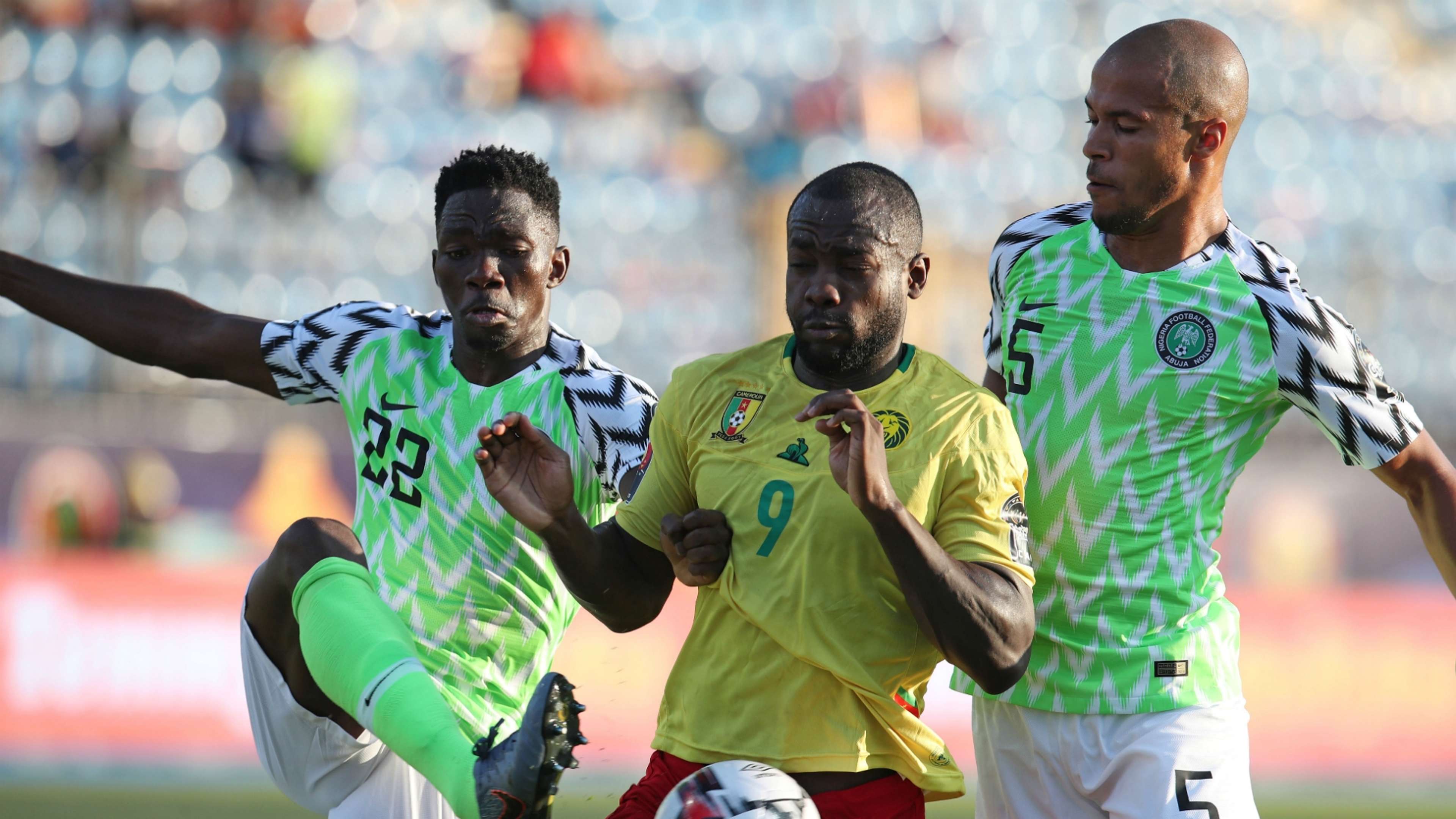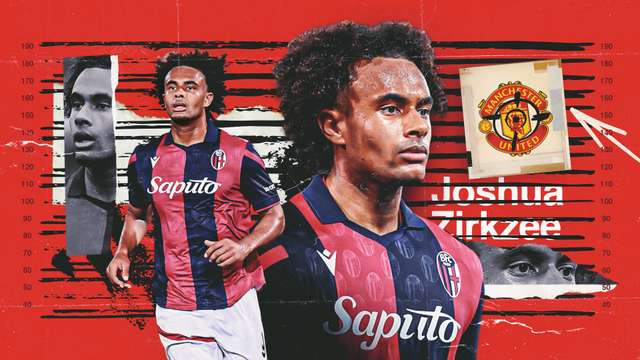Nigeria and Cameroon faced off in the Round of 16 at the Africa Cup of Nations (Afcon) on Saturday evening as two quick-fire second-half goals saw Nigeria stage a comeback to win 3-2. Cameroon had scored two goals in quick succession themselves in the first half to go into the break with a 2-1 lead, but the Super Eagles’ comeback saw them progress to the quarter finals, whilst Cameroon’s tournament came to an end.
TEAM NEWS
Nigeria made five changes from the side which was surprisingly beaten 2-0 by Madagascar. Daniel Akpeyi returned in goal in place of Ikechukwu Ezenwa after being rested for that final group game, with Kenneth Omeruo also back in central defence for Leon Balogun.
Wilfried Ndidi took his spot back from John Ogu, whilst Alex Iwobi replaced an injured John Mikel Obi as the number ten. On the right flank, it was Moses Simon in preference to Samuel Kalu.
For Cameroon, there were three changes after some rotation for their final group game against Benin. In central midfield, Andre-Frank Anguissa was left out with Georges Mandjeck returning to the side alongside Pierre Kunde. Arnaud Djoum was on the bench with Christian Bassagogo returning on the wing, and Clinton N’Jie took the place of Karl Toko Ekambi.
DIRECT VS BUILD UP
From the first minute, there was immediately a contrast in style of play from the two sides. Nigeria started this tournament by trying to play out from the back, but there was no sign of that in this game as Daniel Akpeyi went long from all of his goalkicks. Odion Ighalo was the target and the Super Eagles looked to play off the second ball.
Cameroon were the exact opposite. Every time Andre Onana had the ball he looked to play short to his central defenders or fullbacks and almost never kicked the ball long. There were two early mistakes in their build-up as Yaya Banana and then Onana gave the ball away, but Nigeria failed to capitalise.
There was not much route to progress the ball from the back into midfield for Seedorf’s side though as Nigeria closed down the two deeper midfielders, Pierre Kunde and Georges Mandjeck. The latter did not look comfortable in receiving the ball in tight spaces, so the onus on trying to find players further forwards was all on Kunde.
Nigeria initially looked more effective in their style as they picked up most of the second balls and then looked to feed their speedy wide players for one vs. one dribbles. They also managed to force errors out of Cameroon on the high balls to win corners, particularly from Ambroise Oyongo.
The Indomitable Lions had to look for striker Stephane Bahoken’s movement early on to bypass Nigeria’s midfield marking, even though captain Choupo-Moting had constantly been free between-the-lines and was showing for the ball without being picked out.
In the wide areas, both sides were dangerous. Ola Aina regularly got forward to link with Ahmed Musa, and Moses Simon was a great outlet on the right. For Cameroon, winger Clinton N’Jie and Christian Basogogo switched flanks regularly, but Aina had both in control in the opening half an hour whenever they ventured over to his flank.
SUPER EAGLES SOAR; CAMEROON NET TWICE
After 18 minutes, Nigeria took the lead. The goal had come from an unsurprising source, their left flank. Troost-Ekong hit one of many accurate cross-field diagonals, Aina won the ball in the air, and when Musa took on Banana, he was fouled. Even though his initial deliver was blocked, Peter Etebo put in a great left-footed second delivery; Kenneth Omeruo escaped the man marking of Bahoken to put the ball across goal and Ighalo finished the loose ball via a deflection.
Cameroon’s reaction was strong. They began to deliver a succession of crosses, forcing sliced clearances for corners and causing panic in the Nigerian box from almost every wide delivery. One deep Oyongo cross was headed back across goal and Troost-Ekong cleared into partner Omeruo after Akpeyi flapped when trying to claim.
The pressure eventually told as Bassogog’s cross from the left was finished by Bahoken, who lost Omeruo in the box as the latter’s poor body positioning meant he could not keep track of both the men and the ball. The goal had come from Choupo-Moting’s movement. As Wilfred Ndidi closed down Kunde and left his zone unguarded, Cameroon’s captain received between the lines and set up Bassogog to deliver. The PSG man looked a cut above those around him whenever he received the ball, protecting it well or using one touch passes to link with those around him.
Just three minutes later, Seedorf’s side were in front from a basic second goal. Nigeria unwisely tried to close down Onana from a back pass, he simply found Banana and the defender’s accurate long pass was won in the air by Bahoken; N’Jie raced onto the flick with Aina not tracking the winger and Cameroon were in front.
 Getty
Getty
FULLBACKS STEP FORTH
As Nigeria chased the game, so their fullbacks began to get forward more. Aina was regularly breaking in attack untracked with N’Jie giving only a token defensive effort on that side. Their battle was becoming a crucial one as the Cameroon winger nearly increased the lead after a quick freekick, breaking in-behind and seeing his cross parried clear by Akepyi via a deflection.
Just past the hour mark, Ighalo levelled matters. Aina delivered a deep left-footed cross and it eventually found its way to Awaziem on the opposite flank. The right back swung in a delivery, Musa cushioned the cross to Ighalo and the striker finished. Aina had not been tracked by N’Jie, Bassogog failed to close down Awaziem’s cross and Collins Fai, having been pulled wide to engage Aina, could not get back into position quickly enough to challenge Musa.
Another player whose influence was growing hugely was that of Etebo. He was constantly making forward runs, and it was his aggressive pressing that led to the winner. As Cameroon tried to play short from the back, Banana was closed down by Etebo, forced into giving the ball away, and Iwobi was slipped through on goal to score. Substitute Andre-Frank Anguissa had opened out to the left to get free for Cameroon, but hadn’t recovered his position after his side gave away the ball and Iwobi broke into a big hole in midfield. The substitution of Mandjeck in that area had been a key change.
CAMEROON GO FOR BROKE. NIGERIA BREAK
Needing to turn around the game, Seedorf brought on extra attackers. Tall forward, Karl Toko Ekambi replaced N’Jie and with four minutes plus added time to play, Jacques Zoua was thrown on up front for central midfielder Kunde. Choupo-Moting dropped into central midfield with essentially a front four ahead of him.
With Nigeria’s problems defending crosses, Cameroon looked to get early balls in the box but could only win corners instead of creating clear openings.
Nigeria were able to counter attack regularly against an exposed defence, but Musa wasted one great situation and then Ighalo forced Onana into a save from another transition. Samuel Chukwueze on the right gave fresh legs for the final half an hour and Gernot Rohr made a couple of late changes to close out the game, adding the height of Paul Onuachu for Ighalo and Leon Balogun for Iwobi to give greater numbers in the box.
SUMMARY
Despite having only 38% possession in the game, Nigeria scored three times and had more shots than Cameroon. The styles of play of the two teams was completely different, but Rohr’s team made the most of a set-play, opportunities to attack on the flanks and a mistake in one of Cameroon’s numerous attempts to play out from the back.
Seedorf’s team had a disappointing tournament and were not at their best in this match, struggling to play through midfield despite Choupo-Moting’s threat between the lines. Having had 72% in their 0-0 draw with Benin in their final group game too, it is clear what Seedorf is trying to do with his side, but whether it suits the players at his disposal is another question.
Nigeria will face South Africa in the next round having now settled on a percentage style of play which highlights their strength in wide areas and their power in midfield. Tactically, the side still look susceptible on crosses and in the space in-front of their back four, and Rohr will need to sort out those issues.
 Backpagepix
Backpagepix



